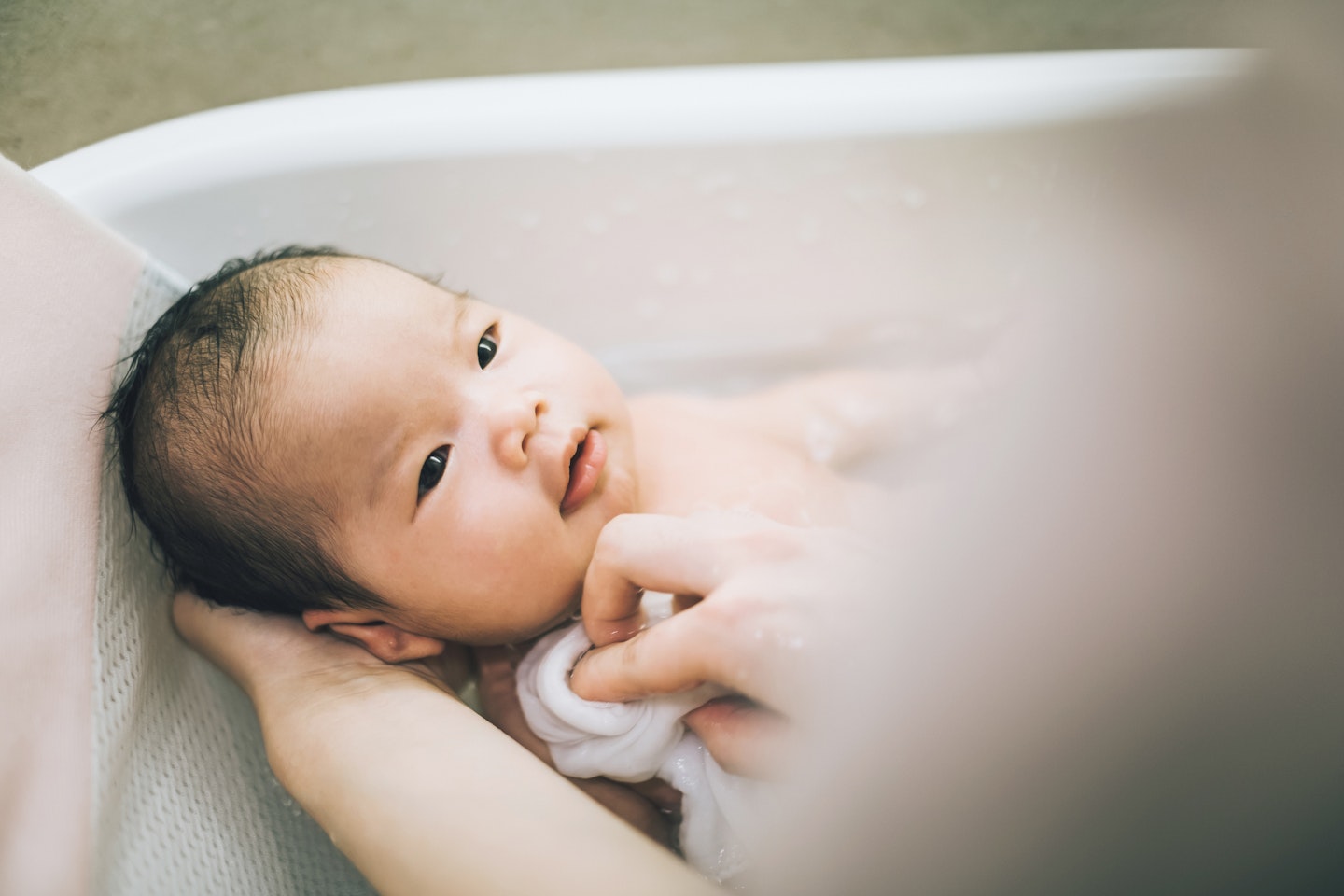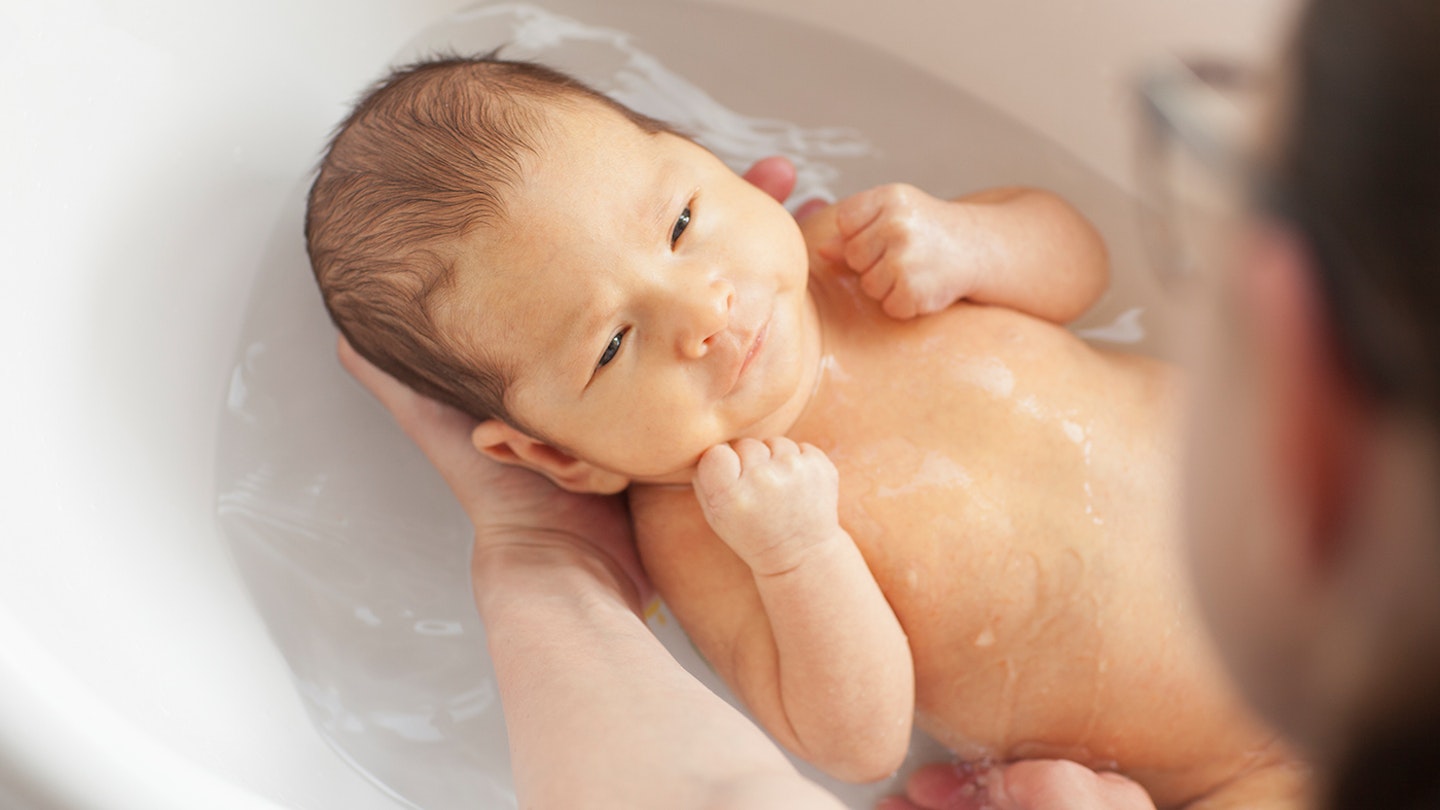Bathtime is brilliant for bonding with your baby and their first bath is very special indeed. Knowing how to bathe your newborn can feel daunting for lots of parents, but you may also feel nervous about how often to bathe your newborn and the best baby bath products to use on their delicate skin. After all, you don’t want to bathe them too much, but definitely not too little.
It's important to make sure your baby only spends a few minutes in the tub, and that you're not trying to scrub off any peeling skin you notice. Newborn skin peeling is completely normal.
The NHS says you don’t need to bathe your newborn everyday (two to three times is plenty), but equally if they love having a bath then every day won’t harm them. You may even prefer to ‘top and tail’ your baby. This is where you wash your baby’s face, neck, hands and bottom.
Now you know how often to bathe your newborn, below we’ve shared a few tips on how you can do this safely.
How to bathe your newborn safely

Check the water temp: make sure the bath water is warm not hot. Check it by popping your wrist or elbow into the baby bath. Also, make sure to swirl the water around so all of the water is the same temperature.
Avoid products in the early stages: plain water may seem a little boring, but for the first month its what’s best for your baby’s skin.
You can keep them out of the water for their hair and face wash: when washing your newborn’s face, just keep them perched on your knee. You don’t need to pop them into the baby to wash their hair either if you don’t want to, you can just support them over the bowl. Plain water is fine, they don’t need any shampoos or conditioners this young.
Support them correctly: after carefully lowering your baby into the bowl, or baby bath, use your hand to support their upper arm, head and shoulders. Use your other hand to gently move the water over your baby.
Never leave them alone: not even for a second as your baby cannot support themself and make sure their head stays clear of the water too.
Try bathing together: give this a go if your baby seems scared about having a bath or gets upset. Make sure you have an extra pair of hands on board to hold your baby as you get in and out of the bath, and make sure that water isn’t too hot.
Pay attention to their skin creases: when patting your baby dry make sure these areas are dry.
